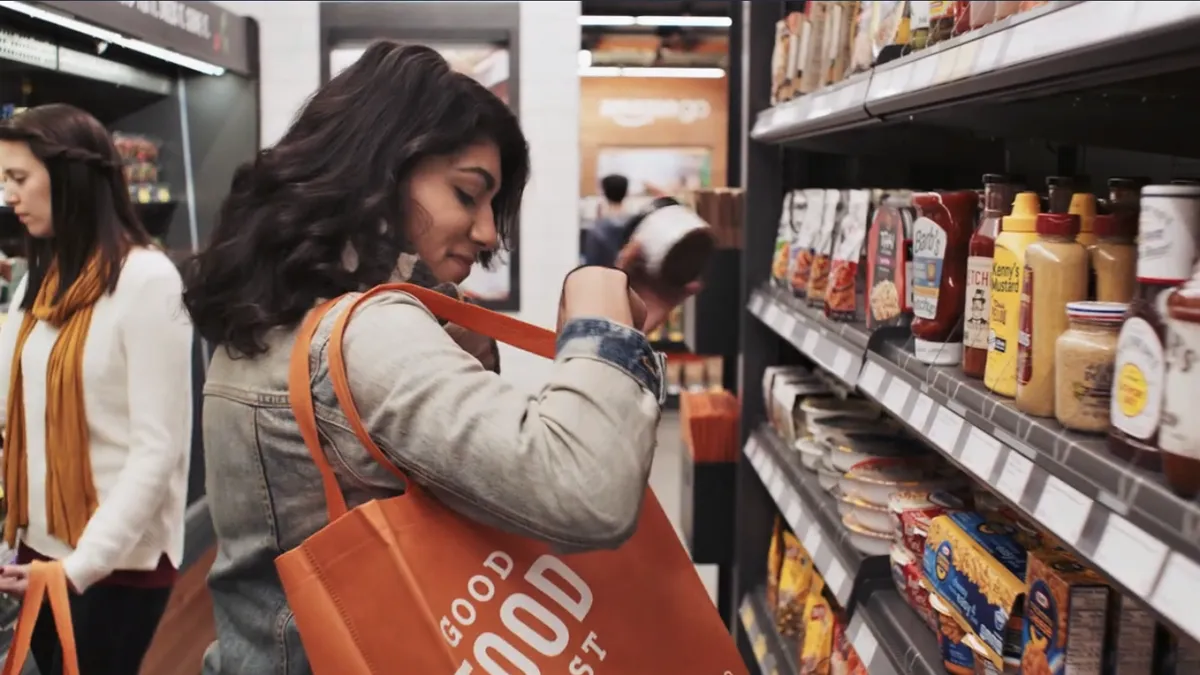Dive Brief:
- Historically low unemployment rates are driving millennials to spend more freely on food than older generations, according to a the IRI Consumer Connect survey, which evaluated consumer spending in Q1.
- Food and beverage sales among millennials were 21.5% higher in March 2019 compared to March 2018, while that number fell 3.8% among retirees and baby boomers.
- Despite the higher spend from younger millennials (born after 1990 for this report), shoppers across generations are turning to money-saving tactics when it comes to food. About 77% of millennials and 78% of retirees buy private label, and 77% of millennials and 69% of retirees reported trying a new, lower-priced brand.
Dive Insight:
Despite millennials' consumer confidence in Q1, IRI reported that food and beverage spending cooled overall as the year began. In addition to adopting more affordable private label brands and lower priced products, shoppers across demographics are downloading coupons and visiting multiple retailers to find the best deal.
However, 44% of retirees and seniors are still willing to spend more on premium food and beverage products than millennials (38%), even with the younger demographics' higher spend on food and beverage.
Within particular departments, growth in Q1 showed mixed results. Liquor and beverage departments were the top performers, while refrigerated sections and general food posted moderate growth before declining in March. Both the produce department and butcher sold fewer pounds than the year prior, while the bakery department saw strong dollar growth.
Plant-centric products are picking up in stores, the report found. About six in 10 consumers want to eat less meat and 80% of millennials report trying alternative meat products. Across demographics, 78% of consumers are more interested in purchasing products that are backed by sustainability claims, IRI reported.
Though there is no single conclusion to draw from the first quarter data, grocery retailers are facing a notable challenge as they try to cater to the preferences and tastes of several generations of shoppers. Although IRI said older consumers still have the greatest purchasing power and millennials are spending the most, this could change rapidly. Up-and-coming Gen Z boasts $143 billion in spending power, and as this demographic comes of age, food purchasing habits may shift even more.












